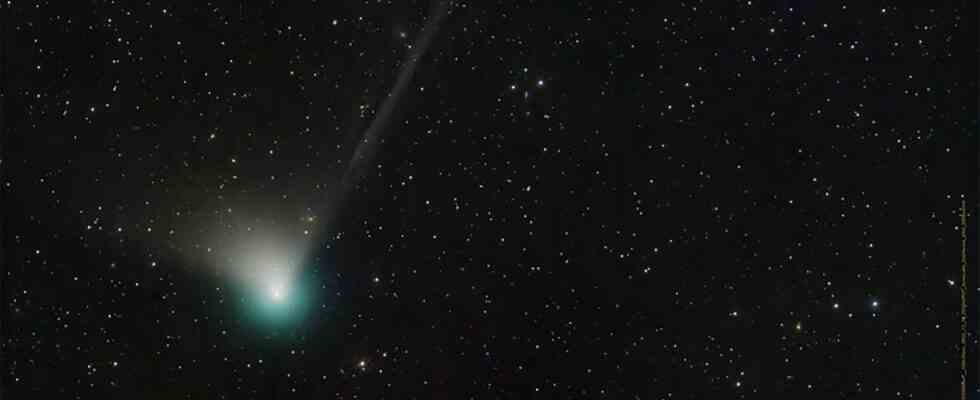Status: 01/29/2023 1:37 p.m
Most recently, the Neanderthals were able to marvel at it: Comet C/2022 E3 (ZTF) flies past Earth again after 50,000 years. If you’re lucky, you can see it with the naked eye in the coming days.
Comet C/2022 E3 (ZTF), also known as the “Neanderthal Comet”, last passed through the inner region of our solar system about 50,000 years ago. It is possible that the Neanderthals who were still alive at the time also saw him in the Ice Age sky. Now it is approaching Earth again and will be visible with simple binoculars – possibly even with the naked eye.
This is how you can observe the comet
The best chances of seeing the comet are in the last week of January and the first days of February – provided the weather and light conditions are favorable. Then, on February 5, the full moon will outshine the fading comet.
To see the comet, look north. There you can see the two constellations Big Dipper and Cassiopeia. Cassiopeia is also called Celestial W because five very prominent stars are arranged like the letter “W”. The comet can be seen between the Big Dipper and the celestial W.
Why is the comet called C/2022 E3 (ZTF)?
Comets used to be named after their discoverers. Because so many tail stars are being discovered today, they are now baptized with a coded name. The current comet is called C/2022 E3 (ZTF).
The C stands for the comet type. In this case, it is a long-period comet. 2022 is the year of discovery. The following E stands for the half month in which the comet was discovered. January’s two halves are A and B, February’s C and D, so E3 stands for the first half of March, when the comet was the third to be spotted.
The abbreviation ZTF at the end is the abbreviation for the name of the research program Zwicky Transient Facility at the Palomar Observatory in the USA, which is constantly and systematically scanning the sky and has found this comet among many others.
What does the comet look like in the sky?
In many images, the comet can be seen with a long tail and a greenish coma, which is a diffuse cloud of gas and dust around a comet’s nucleus. However, such photos are created by long exposures, which can last from 30 seconds to over an hour.
To the human eye, the comet looks more like a blurred speck and is almost indistinguishable from other stars at a quick glance. In the bright night sky over a city or near a settlement, the comet is even harder to see because of increasing light pollution. Away from settlement lights, the green of the comet – and possibly also its delicate tail – can be seen. Even simple binoculars can help when searching for comets.
25,000 years of flight time
The chunk of ice and dust flies around the Sun in a very elongated orbit. Data on the orbital location of C/2022 E3 (ZTF) collected over the past few months has made it possible to calculate when the comet last flew by Earth and when it will again. It takes 50,000 years to complete one orbit around the sun. The 25,000 years of flight time from “very far out” to near the sun are halved.
“Very far out” means an area in which remnants from the time the solar system was formed are still circling in space, more precisely large chunks of frozen gas and dust. When they get close to the sun, the gas thaws, vaporizes, and the sunlight causes the gas molecules to glow.
Last opportunity
The green of the gas envelope around the core of C/2022 E3 (ZTF) is believed to be due to dicarbon, a molecule made up of two carbon atoms. The green color can only be seen close to the comet’s nucleus because dicarbon decays very quickly and it therefore does not reach the region where the tail is formed. The comet’s tail itself appears pale and white, with delicate colors only visible in long exposure images.
If you miss the comet, for example because of poor visibility, you will probably not have the opportunity to see it in the sky. The next time C/2022 E3 (ZTF) will fly past the earth again in 50,000 years. However, his return is not entirely certain, it could also be the case that after this visit he will leave our solar system forever. Experts are still divided about the future fate of C/2022 E3 (ZTF).

